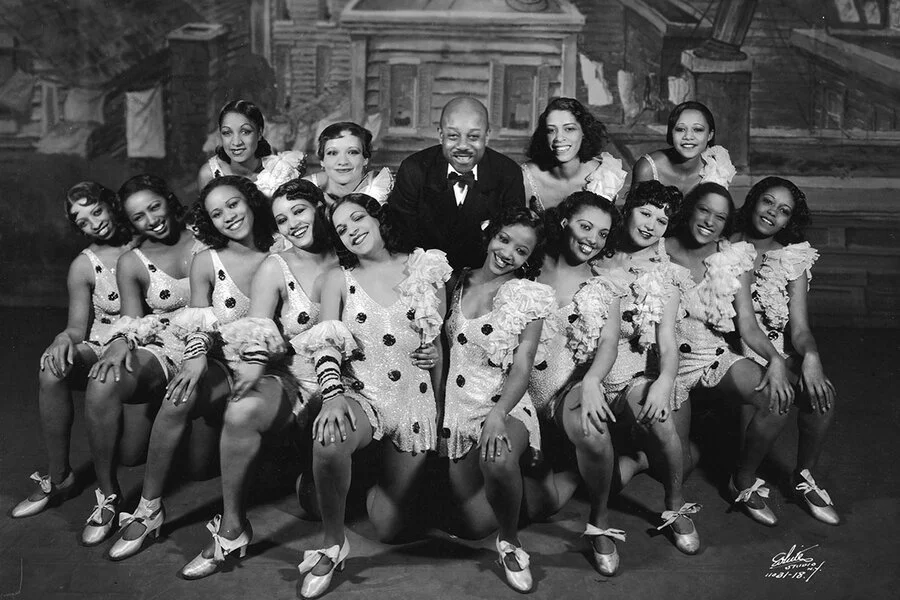What is a Chorus Girl?
The historic “chorus girl” dancer is an iconic figure whose roots run deep and wide. While some trace the tradition back to European influences like the Ballets Russes, the lively Can-can dancers of 19th-century music halls, or even backup performers in Baroque operas, the true spirit and style we recognize today owe their deepest origins to Black American culture and the rise of early jazz music.
Around the turn of the 20th century, ragtime music—shaped by Black American banjo styles and syncopated rhythms—set the stage for jazz. Jazz quickly became the driving force behind chorus girl dancing. From New Orleans to Harlem, jazz clubs welcomed countless young women into chorus lines, where the work was physically demanding but also offered a form of empowerment. Pioneering Black American chorus dancers and solo artists like The Cotton Club Dancers, The Sepia Steppers, Mable Lee, and Sandra Gibson helped define the vibrant style we now call Jazz Roots dance.
Jazz Roots—sometimes known as Solo Jazz or Vernacular Jazz—refers to the energetic solo and chorus dance styles that grew alongside jazz music from the 1920s to the 1940s. This dance form includes the lively Charleston kicks, smooth swing moves, and playful improvisations performed in chorus lines or solo, all deeply connected to Black American social and performance traditions. The term “Jazz Roots” was introduced in 2002 by Olivier Ménicot (aka BrotherSwing) to highlight these authentic, rhythm-driven dances, distinguishing them from the more theatrical modern jazz styles developed later by choreographers like Jack Cole and Bob Fosse.
A landmark moment came in 1921 with *Shuffle Along*, a Broadway show featuring an all-Black cast. It introduced chorus girls who brought jazz dance to life with improvisation and personal flair, breaking racial stereotypes and inspiring the Harlem Renaissance. This production also changed the landscape of Broadway chorus lines by introducing genuine jazz dance to mainstream audiences.
When people hear “chorus girls,” they often picture the dazzling performers of Harlem’s Cotton Club, the glamorous Ziegfeld Follies, Busby Berkeley’s spectacular productions, the precision of the Rockettes, or Hollywood’s MGM Goldwyn Girls. These chorus lines were stages where stars like Josephine Baker, Lena Horne, Ginger Rogers, and Joan Crawford launched their careers. But behind the glitz, chorus girls faced tough realities. Many battled addiction and died young. They were judged constantly on their bodies, worked grueling hours until their feet bled, earned little pay, and were frequently subjected to sexual harassment. Hollywood has historically whitewashed these stories, often sidelining the Black pioneers who truly shaped jazz dance.
Today, chorus dancers and solo Jazz Roots performers keep this vibrant cultural legacy alive, honoring the Black American pioneers who built the foundation of jazz dance. We celebrate these legends not only for their incredible talent but also for their strength and perseverance in the face of ongoing racial and economic struggles that still affect the world of dance and entertainment.



